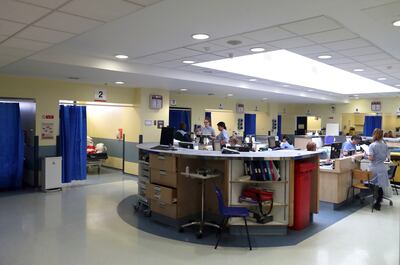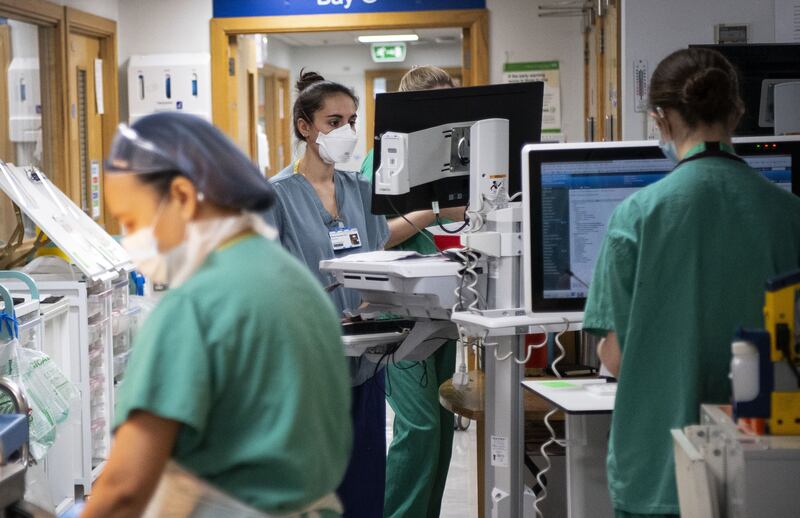People hired from abroad make up a third of doctors and a quarter of nurses in the NHS workforce in England for the first time, new analysis shows.
About 209 different foreign nationalities are now represented in the NHS, particularly Indian and Pakistani, with the two nationalities accounting for nearly one in nine NHS doctors.
Health chiefs warn that the figures highlight how reliant the understaffed health service is on people from all over the world.
They say the UK needs to avoid becoming over-reliant on overseas staff who would otherwise help fill shortages in their countries of origin.
Of the 125,741 full-time equivalent (FTE) hospital and community health service doctors in England in June 2022 whose nationality was known, just over a third (33.8 per cent, or 42,531) were from overseas.
This is up from around a quarter (26.7 per cent) six years earlier, in June 2016, and is the highest proportion since current data began in 2009.
The most common non-UK nationality is Indian, accounting for 7.3 per cent of all FTE doctors, followed by Pakistani (3.3 per cent), Egyptian (2.7 per cent) and Nigerian (2 per cent).
There has been a similarly sharp jump in the proportion of nurses and health visitors who are from overseas, which now stands at a quarter of the total (25.4 per cent of 313,679 staff), up from about one in six (17.1 per cent) in June 2016.
Indian was again the most common non-UK nationality among this group, accounting for 7.3 per cent of the total, followed by Filipino (6.9 per cent), Nigerian (1.7 per cent) and Irish (1.3 per cent).
Saffron Cordery, interim chief executive of NHS Providers, the membership organisation for NHS trusts, said the analysis shows “just how much our severely understaffed NHS relies on dedicated people from all over the world to deliver high-quality care to patients”, whose contribution is “invaluable”.
She continued: “The stark reality is that the NHS just doesn’t have enough staff, putting patients’ safety at risk by affecting the care that overstretched staff can provide.
“With vacancies at an all-time high across health and care services — 132,000 in trusts in England alone — we desperately need a long-term, fully-funded workforce plan for the NHS from the government to invest in growing the staff we recruit from within the UK alongside valued recruits from abroad.”
Not all NHS staff groups have seen a rise in the percentage of workforce with non-UK nationalities.

The figure for consultants has remained broadly unchanged from June 2016 (22.2 per cent) to June 2022 (21.9 per cent), while midwives have seen a drop from 8.5 per cent to 6.8 per cent.
But other groups have experienced a similar trend to that of doctors and nurses, with ambulance staff seeing an increase in non-UK nationalities over this period from 4.8 per cent to 7.4 per cent, and medical support staff from 10.4 per cent to 14.5 per cent.
All figures are based on the latest available data from NHS Digital.
Billy Palmer, senior fellow at the independent think tank The Nuffield Trust, said PA’s analysis shows the health service “clearly relies on these overseas nationals to deliver care”.
He added: “The NHS needs to avoid becoming over-reliant on overseas staff as our recruitment practices could start to negatively impact on the countries of origin which have their own staff shortages.
“Another risk of over-reliance on overseas staff is that a sudden change of circumstances, such as Covid-19 travel restrictions or increased competition from other countries, could mean we become unable to recruit as many through this route as hoped.”
A Department of Health and Social Care spokesman said: “International recruitment is only one part of our plans to grow the NHS workforce, and the supply of home-grown staff is increasing.
“There are over 29,000 more nurses working in the NHS now compared to September 2019, and we are on track with our commitment for 50,000 more nurses by 2024.
“Acceptances to nursing and midwifery courses in England have risen since 2019 and we have increased medical school places by 25 per cent alongside creating five new medical schools.
“NHS England have also been commissioned to develop a long-term workforce plan to help recruit and retain more NHS staff.”
Separate research from the Royal College of Nursing (RCN) published on Friday suggests the use of an agency or an internationally recruited nurse costs the NHS up to three times more than giving an experienced nurse a 5 per cent-above-inflation pay rise.
Among the costs incurred in recruiting staff from abroad are recruitment agency fees, visa applications, travel, accommodation and examination fees, while a premium is charged for agency staff because they come through a recruitment firm.
Pat Cullen, RCN general secretary and chief executive, said: “Our NHS is built on the shoulders of our international colleagues and agency nurses play a vital role in patient care, but the UK government must strengthen the domestic workforce and ensure we have long-term, sustainable solutions for the health and care crisis.”







